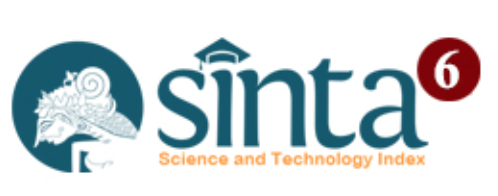Penyuluhan dan Pelatihan Kewirausahaan Pembuatan Dodol Rumput Laut sebagai Upaya Diversifikasi Produk Olahan dan Peningkatan Nilai Tambah Rumput Laut
(Pengabdian Masyarakat Kepada Kelompok Budi Daya Rumput Laut di Desa Ped, Kecamatan Nusa Penida)
Abstract
Seaweed has long been known as a type of marine plant that has economic value and is widely used in cosmetics, food, industrial, and other industries. Seaweed is mostly processed in dry form after going through the drying process or processed into ready-to-eat foods, such as lunkhead, sweets, and drinks. The number of seaweed cultivation groups in Ped village is 8 (eight) groups with a total of about 120 members. This activity was able to attract attention and interest as well as the participation of at least 29 people from the total number of members of seaweed farmers in Ped Village, Nusa Penida District, Klungkung. This entrepreneurial training for making seaweed lunkhead aims to increase the creativity and entrepreneurial interest of seaweed farmers in diversifying seaweed processed products so that they are able to provide added value and economic value for seaweed processed products, and ultimately increase the income of seaweed farmers in Indonesia. Ped village, Nusa Penida district. The expected outcome of this outreach and entrepreneurship training for making seaweed lunkhead is that seaweed farmers are able to make seaweed lunkhead products as one of the processed products that are ready to be marketed and consumed. The method of implementing this community service activity is the method of providing counseling, in the form of exposing material about the potential and benefits of seaweed, and training on practical skills in making seaweed lunkhead which is given directly to seaweed farmers.
References
BPS, K. K. (2019). Kecamatan Nusa Penida Dalam Angka 2019. Badan Pusat Statistik Kabupaten Klungkung.
BPS, K. K. (2020). Kabupaten Klungkung Dalan Angka 2020 (B. Kabupaten Klungkung, Ed.). BPS Kabupaten Klungkung.
Dharma, I. G. B. S., Dewi, A., & Darmasetiyawan, I. M. S. (2016). Pelatihan Pengolahan Produk Rumput Laut Untuk Mendukung Pengembangan Nusa Lembongan Sebagai Destinasi Wisata. Buletin Udayana Mengabdi, 15(2), 131–135.
Kresnarini, H. I. (2011). Rumput laut dan produk turunannya. Warta Ekspor, 1–20.
Pradnyana, I. W. G. W., & Nugroho, S. (2019). Upaya Revitalisasi Pertanian Rumput Laut Dalam Praktik Pariwisata Di Desa Lembongan, Kabupaten Klungkung. JURNAL DESTINASI PARIWISATA, 7(2), 352–363.
Subhan, H. A. (2014). Analisis Pendapatan Dan Nilai Tambah Dodol Rumput Laut Pada Industri Cita Rasa Di Kelurahan Tinggede Kabupaten Sigi. Tadulako University.
Sulistyaningsih, M., & Puryantoro, M. (2017). Peningkatan Nilai Tambah Rumput Laut Menjadi Olahan Bakso Di Desa Gelung Kecamatan Panarukan. Paradharma (Jurnal Aplikasi IPTEK), 1(1).
Welly, M., Sanjaya, W., Trimudya, D., & Yanto, W. (2012). Profil Perikanan Nusa Penida, Kabupaten Klungkung, Provinsi Bali. Bali: Coral Triangle Center (CTC).





